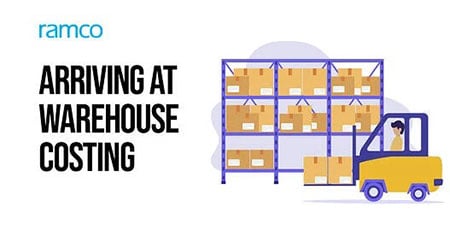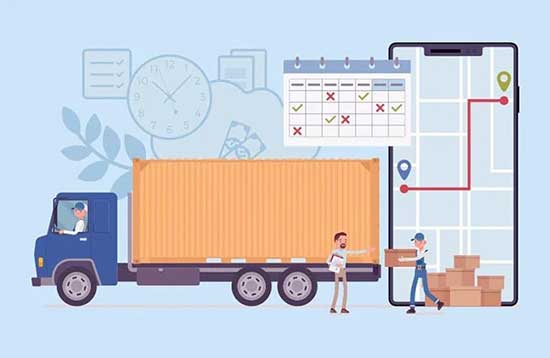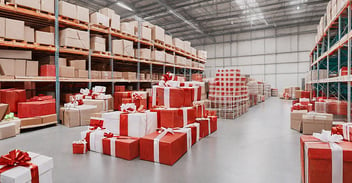

Warehousing is the art of effectively managing space and time. Space is viewed as cost per month whereas time is viewed through the lens of duration taken for the movement of material in and out of the warehouse. And generally, if a price quote is required for a warehouse, the business development team of a Logistics Service Provider (LSP) quotes a per square feet (sq ft) rate or per transaction rate. Sounds pretty simple, right? But a lot of solution designing and calculation takes place before arriving at this simple per sq ft or per transaction rate.
In the warehousing space, the costing model differs according to a customer’s needs and there will be a varied set of requirements for every customer which includes the type of facility (shared or dedicated), capabilities, location and many other aspects. Irrespective of the methodology, warehouse providers need to share a definitive cost for the contractual period.
To arrive at this price, let’s look at the various elements that are involved in warehousing costing model
1. Land and Facility Cost:
The calculation of this cost element depends on whether the facility is acquired or rented. Cost is worked out based on a per sq ft rental rate considering the advances, brokerage and security deposits.
2. Manpower / Labour Cost:
There is a need to arrive at a detailed man-power cost, which must include skilled and unskilled labour cost, operating staff comprising of in-house and contracted workforce, management staff, etc. Detailed costing should consider monthly salary, training cost, bonus, staff welfare, or any other monetary perks, etc.
3. Capital Expense:
Warehouse amenities such as Material Handling Equipment (MHE), Hand Held Devices (HHD), racks, pallets, office equipment, etc come under the category of capital expenses. Factors to be considered, apart from the cost of the amenities, are, the life of the equipment (to determine the depreciation value), interest percentage on the cost of the equipment and the annual maintenance cost, to decide the monthly cost of the infrastructure.
4. Operation Expense:
Operational expenses are not fixed but vary and it recurs, say monthly or weekly, based on the usage. In this category are electricity and fuel cost, communication cost, stationery and consumables cost and other incidental expenses.
5. Per Order or Per Transaction Rate:
This rate is fixed after taking into consideration the average volume of inward orders and fulfilment order that can be performed in a day. Time taken per transaction contributes to this calculation. Another factor which also contributes to this calculation, which is normally not considered, is the type of item that is being handled. Based on the size and the type of the SKU (Stock Keeping Unit), the time taken for a transaction varies.
Finally, we have profit margin, which is normally a percentage applied to the total cost. There is another factor to consider, which is the risk margin, that is mostly missed during the calculation. A realistic estimate of the risk margin is based on past experiences.
Most of the logistics service providers continue to calculate this costing through excel sheet. Hence, the cost is arrived based on the experience of the salesperson involved and often rates are quoted solely on the discretion of an individual. What the organization misses through this is the visibility of historical data, which would enable the organization to effectively calculate a near-accurate estimate with help of historical financial statement to determine the expenses incurred in the previous years.
Ramco Logistics, through its integrated offering of Fleet management, Fixed Asset, HRMS, can automate and provide visibility and utilise the historical data of all the cost elements. This enables the business development team at warehouses to take informed decision backed by data, which helps to work out a realistic estimate and reduce the arbitrary costing formula.
Frequently Asked Questions (FAQs)
Enterprise asset management (EAM) involves the management of mission critical assets of an organization throughout each asset's lifecycle. EAM is used to plan, optimize, execute, and track the needed maintenance activities with the associated priorities, skills, materials, tools, and information. The aim is to optimize the quality and utilization of assets throughout their lifecycle, increase productive uptime and reduce operational costs.
Enterprise asset management (EAM) involves the management of the maintenance of physical assets of an organization throughout each asset's lifecycle. EAM is used to plan, optimize, execute, and track the needed maintenance activities with the associated priorities, skills, materials, tools, and information.
The software helps in effective maintenance of assets through preventive, predictive, shutdown and breakdown maintenance strategies. The system also helps enterprises mitigate equipment risks by enhanced safety standards. The streamlined operations and improved asset performance helps organizations increase their investment effectiveness.
EAM is important because it helps organizations track, assess, manage and optimize asset quality and reliability. Asset intensive Organizations have hundreds, thousands, even millions of assets which needs to be maintained to maximize / optimize life of these assets to increase the return on investment.
The key features of effective EAM are:
- Work management.
- Maintenance Strategies (Preventive/ Predictive / Breakdown / Shutdown).
- Planning and scheduling.
- Supply chain management.
- Health and safety.
- Mobility.
- Analytics.
- Improved Asset Health at reduced cost through data driven maintenance Programs
- Complete visibilityon entire maintenance data across Equipment, across Models, across Branches to aid in analysis & decision making such as to Repair or Replace the Equipment
- Insightful analysis of Inspection Data to improve customer satisfaction
- Effective maintenance management enhanced by predictive maintenance and inbuilt analytics
- Increased reliability and safety, keeps complete track of all the inspections & calibration schedules
- Mobile Application enables users to execute work while “in the field” leading to minimized non-productive time and increased productivity and reduces duplication of work and human errors in recording information.
- Quick turnaround time through Actionable Notification & Alerts for every process in real time and accessible anytime and anywhere.
- Improved Regulatory Part of asset management involves the implementation of better O&M practices, which can significantly improve compliance.
Asset Intensive companies under the following Industries :
- Ports
- Cement and Mining
- Utilities
- Fleet Maintenance
- Equipment Rental
- Other Manufacturing
- Real Estate & Infrastructure
- Power Generation
Contact us for a meeting and schedule a demo
This differs on case to case basis, based on the type of installation and unique industry specific requirements. Contact us for a meeting and schedule a demo.
This differs on case to case basis, based on the type of installation and unique industry specific requirements. Contact us for a meeting and schedule a demo.
Stay Connected, follow us on LinkedIn / Twitter to know more about EAM Software latest trends.


